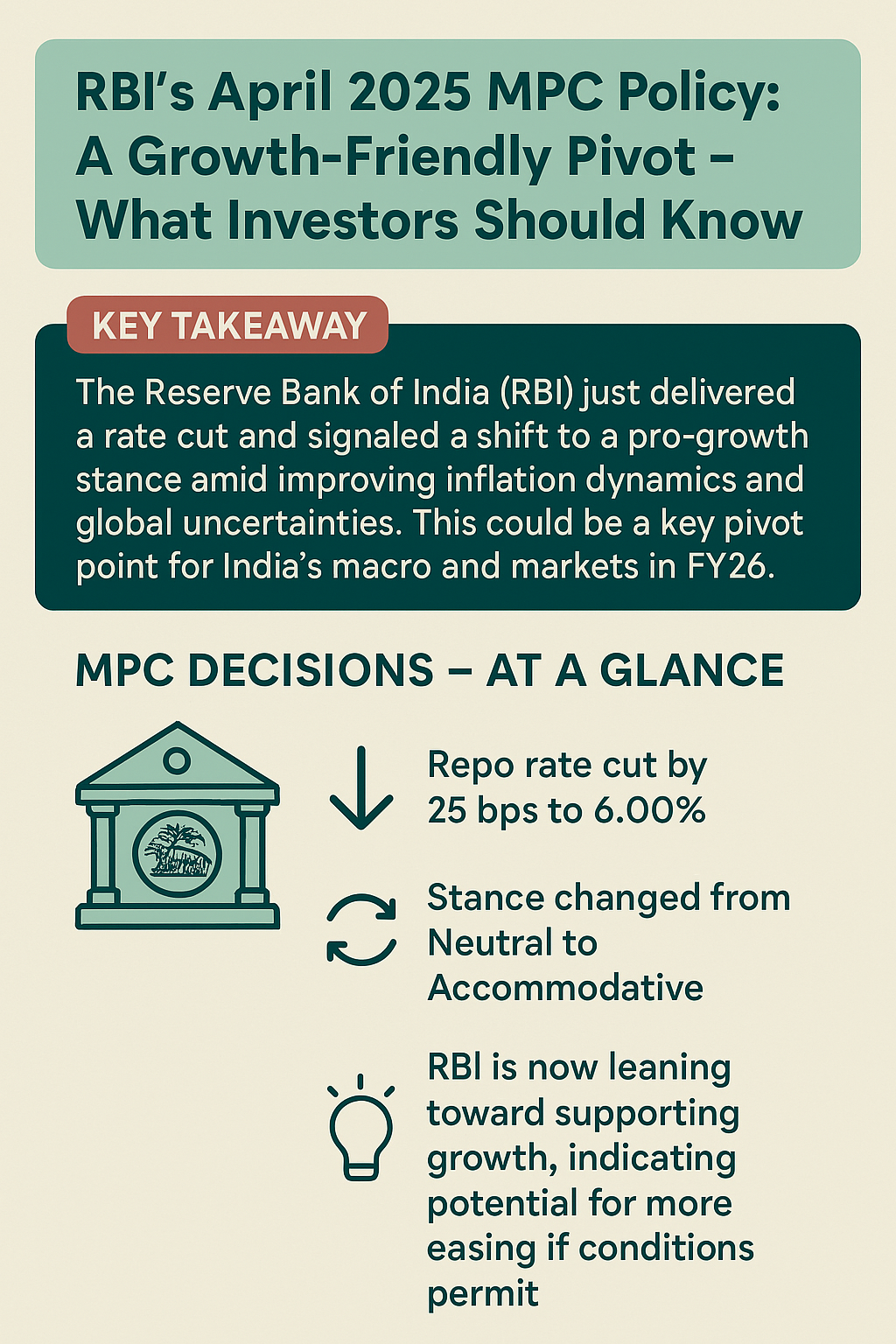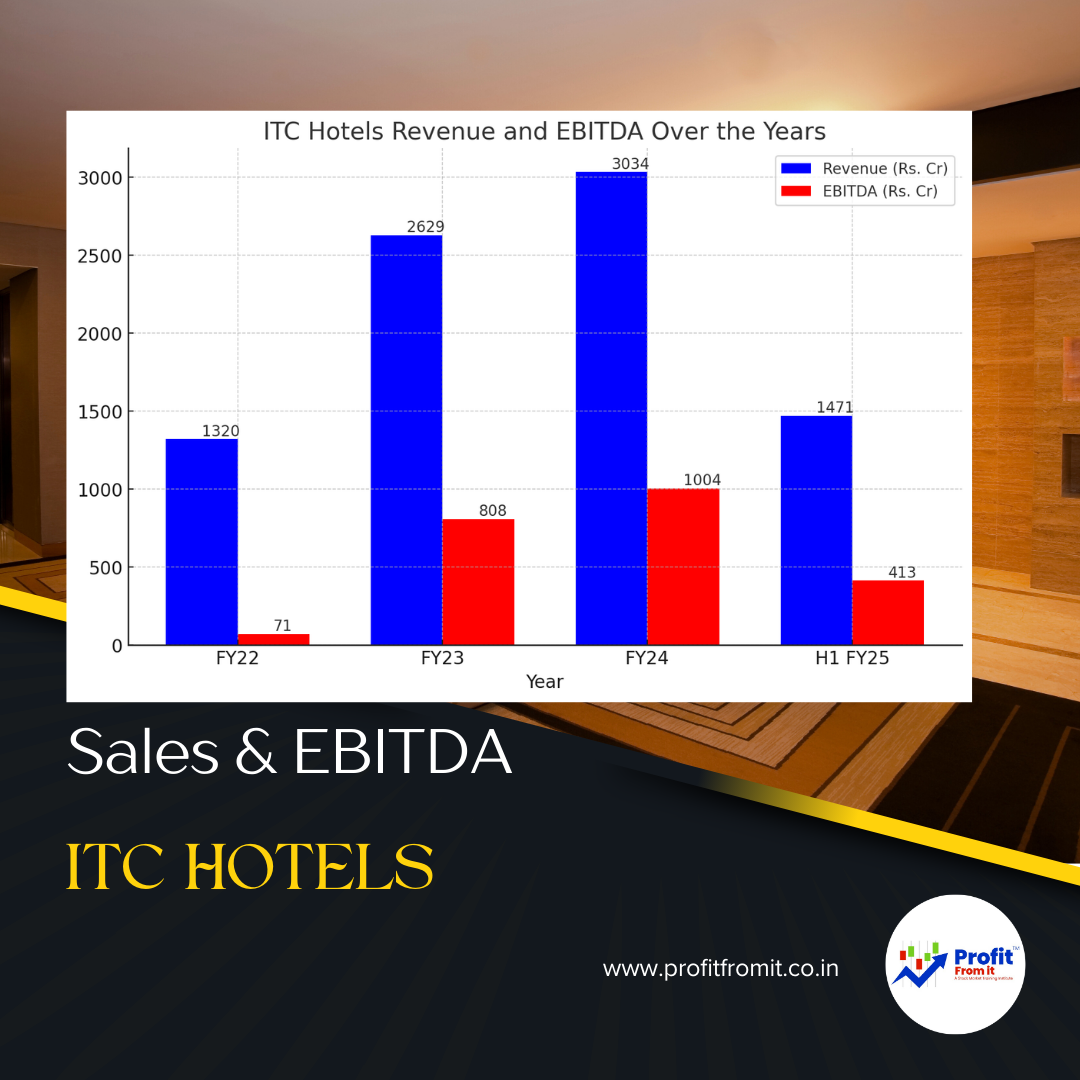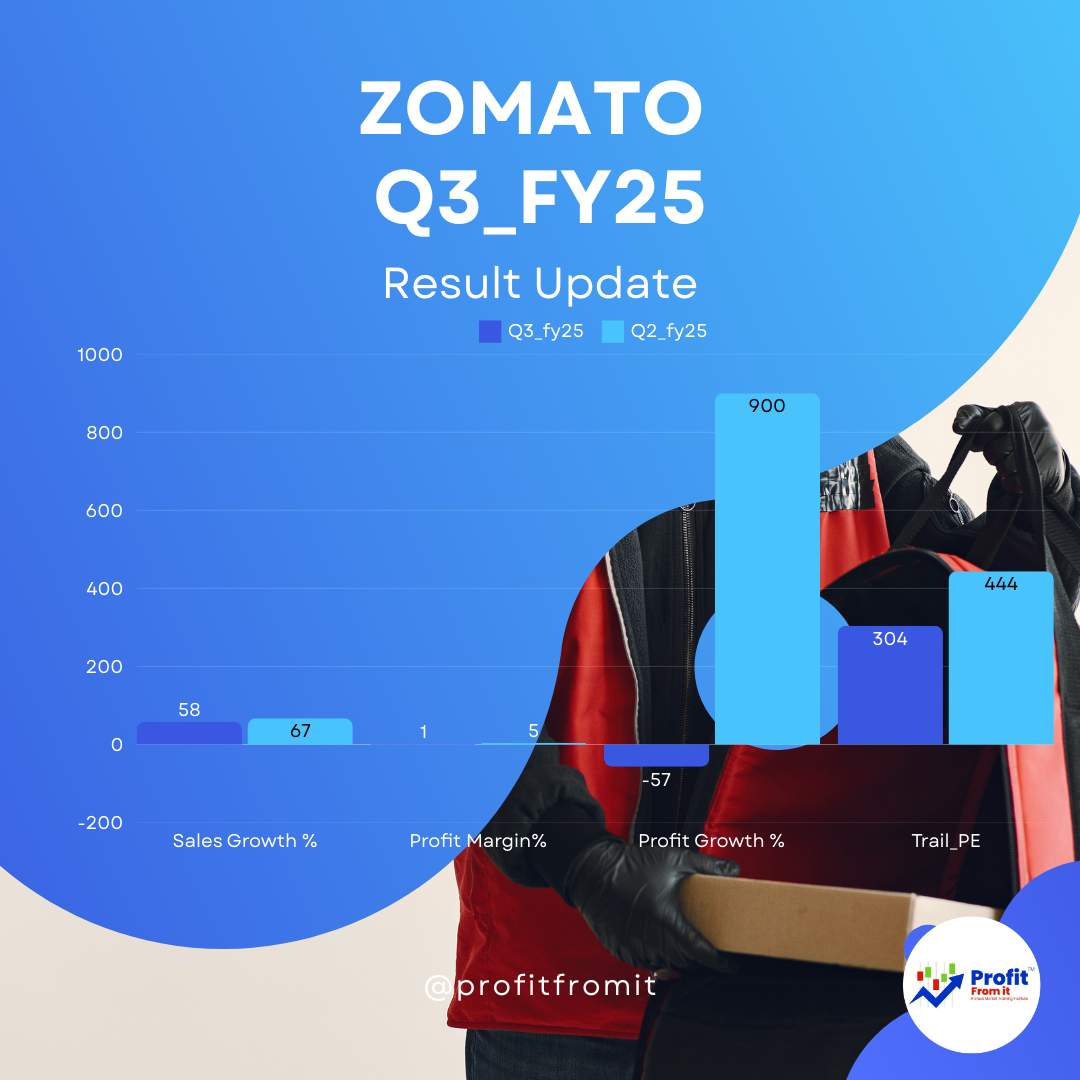
📰 RBI’s April 2025 MPC Policy: A Growth-Friendly Pivot – What Investors Should Know
📌 Key Takeaway
The Reserve Bank of India (RBI) just delivered a rate cut and signaled a shift to a pro-growth stance amid improving inflation dynamics and global uncertainties. This could be a key pivot point for India’s macro and markets in FY26.
🏦 MPC Decisions – At a Glance
Repo rate cut by 25 bps to 6.00%
Stance changed from Neutral to Accommodative
RBI is now leaning toward supporting growth, indicating potential for more easing if conditions permit
💡 What “Neutral to Accommodative” Means for Investors:
A shift from Neutral to Accommodative means the RBI is now more inclined to cut interest rates or maintain low rates to support economic growth. For investors, this signals:
📉 Lower borrowing costs – Positive for businesses and consumers
📈 Potential boost to equity markets – Especially rate-sensitive sectors like banking, real estate, and autos
💰 Better liquidity – Easier access to credit can drive corporate earnings and investment activity
In short: It's a pro-growth signal, and markets often interpret this as bullish in the near to medium term.
🔍 Economic Backdrop
📈 GDP Growth Projections (FY 2025–26)
India’s real GDP is expected to grow at 6.5%, downgraded from previously 6.75% due to global tariff war. Here’s how the quarters stack up:
Growth Drivers:
Urban consumption recovery
Robust rural demand (thanks to strong rabi output)
Infrastructure spending and private capex revival
Healthy banking and corporate balance sheets
💹 Inflation Outlook – Comfortably Within Target
Headline inflation is seen averaging 4.0% in FY26:
What’s helping?
A sharp decline in food inflation (vegetables and pulses)
Softening crude oil prices
Controlled core inflation despite rising gold prices
🌍 Global Influence – A Double-Edged Sword
Global GDP growth is moderating
Dollar weakening; oil falling
Services exports stay strong, but goods exports face headwinds
🔄 Policy Changes Beyond Rates
RBI also announced structural reforms:
Co-lending expansion: Now allowed beyond NBFCs, across all loans
New framework for gold loans: To standardize and de-risk
Securitisation of stressed assets: New mechanism apart from ARCs
Flexibility for UPI limits: P2M transaction limits to be adjusted by NPCI
Regulatory Sandbox: Now “theme-neutral” and always open
📊 Sectoral Impact – Where the Action Is
✅ Potential Winners:
⚠️ On Watchlist:
📈 Investment Strategy Angle
With an accommodative stance and room for future rate cuts, the RBI has laid a foundation for non-inflationary growth. Sectors leveraged to domestic demand, infrastructure, credit, and fintech could see investor interest building up.
🔮 Outlook
The RBI seems ready to stay agile, keeping a close watch on both inflation and global risks. For now, India’s macro story looks stable and growth-positive, setting the stage for broader participation in equity markets.



 for Investors The provided chart outlines key metrics for Nifty 500 companies across different periods (FY22 t.png)





